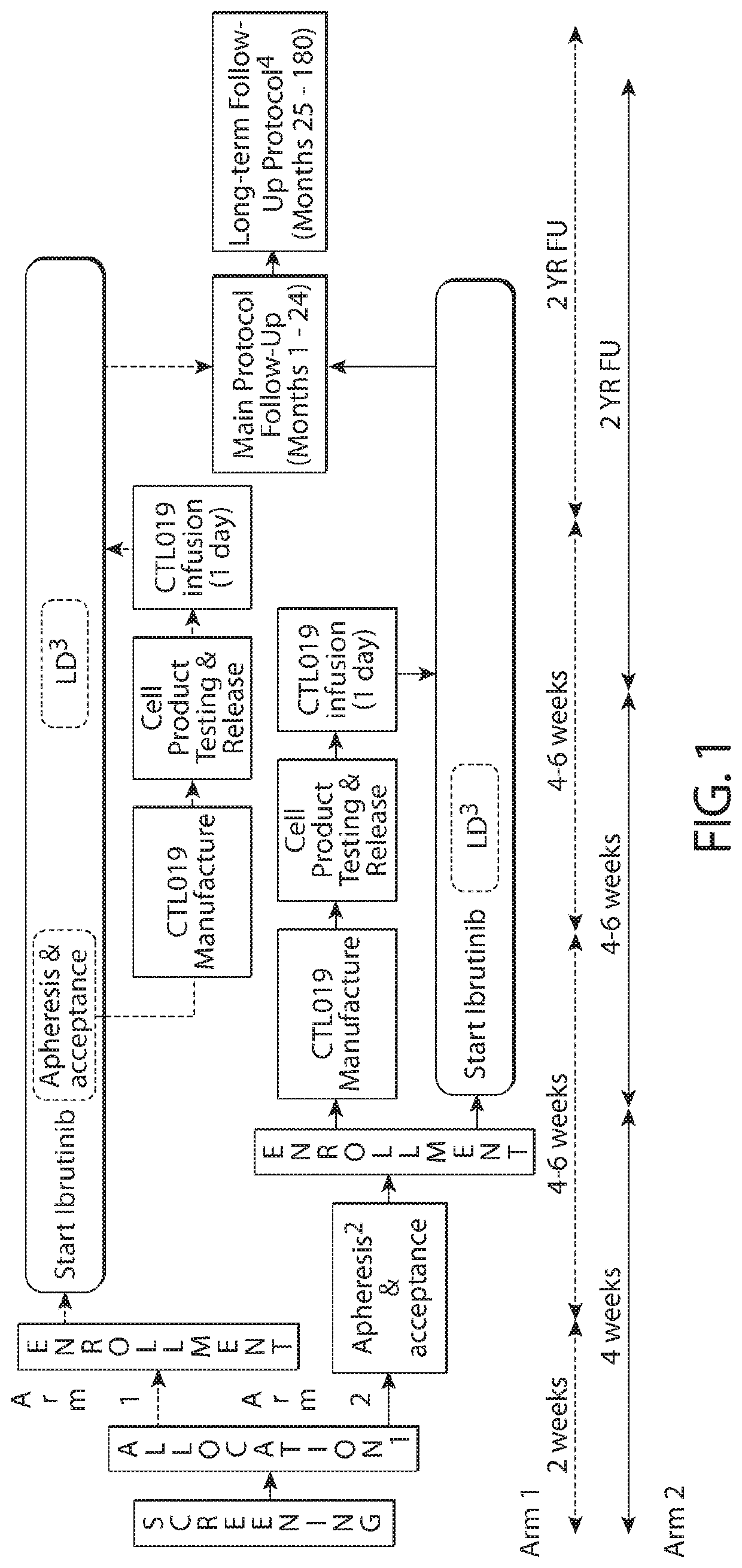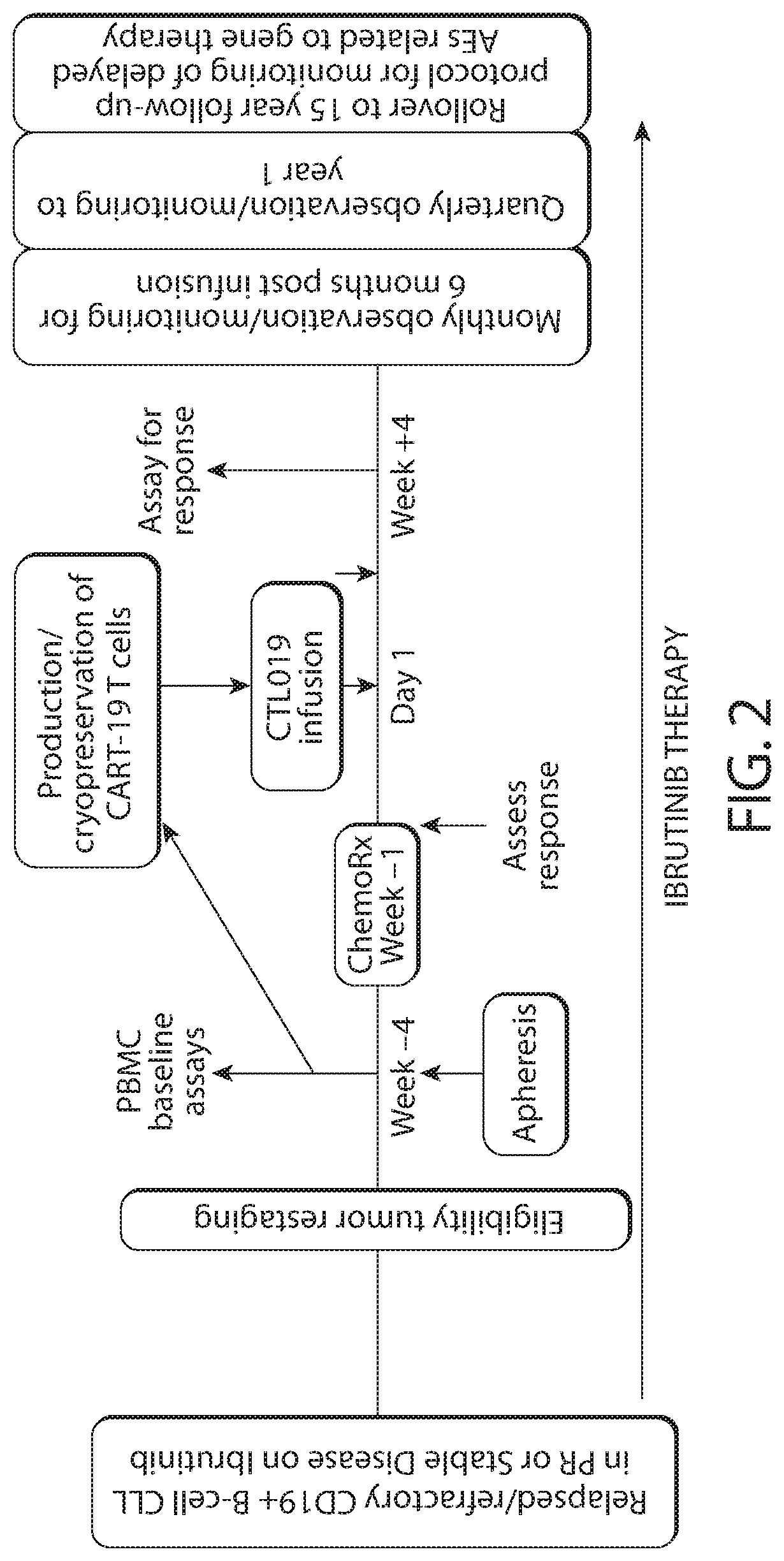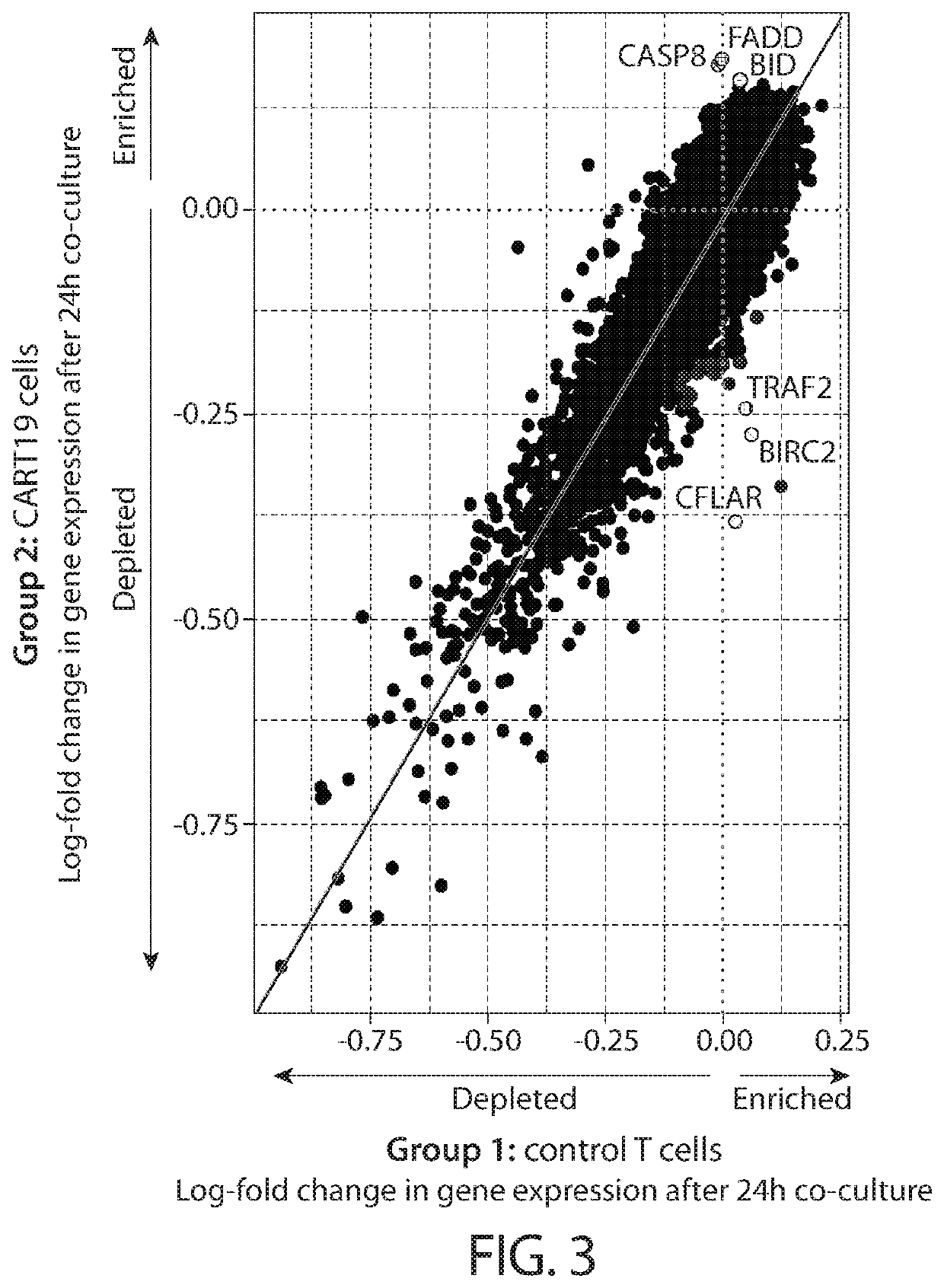Combination therapy with chimeric antigen receptor (CAR) therapies
- Summary
- Abstract
- Description
- Claims
- Application Information
AI Technical Summary
Benefits of technology
Problems solved by technology
Method used
Image
Examples
example 1
b, Multicenter Study to Determine the Safety and Tolerability of Tisagenlecleucel in Combination with Ibrutinib in Adult Patients with Relapsed and / or Refractory Diffuse Large B-Cell Lymphoma
Purpose and Rationale
[1410]This study is designed to evaluate the safety, tolerability, and preliminary efficacy of administering ibrutinib in combination with tisagenlecleucel in patients with r / r DLBCL. In one arm of this study, r / r DLBCL patients will receive ibrutinib prior to leukapheresis to explore the potential effects of ibrutinib on the manufacturing process and on the final CAR-T cell product. First, exposure to ibrutinib prior to leukapheresis may, e.g., improve the function of the harvested T cells and result in enhanced T cell proliferation during manufacturing. This effect is suggested to be important, e.g., for leukapheresis product collected from CLL patients, as their T cells exhibit profound proliferation defects that result in difficulty with manufacturing CAR-T cells. The im...
example 2
Multicenter Trial Evaluating Tisagenlecleucel (CTL019) in Combination with Ibrutinib in Patients with Relapsed / Refractory CLL
Introduction
[1427]Chronic lymphocytic leukemia (CLL) is the most prevalent leukemia in the western world. The number of people living with CLL is projected to increase by 55% by 2025 due to improved survival while the cost of CLL management will increase by 590%. Chemoimmunotherapy regimens such as fludarabine, cyclophosphamide and rituximab (FCR) have been standard first line treatment for young patients. Newer oral targeted agents such as ibrutinib, idelalisib and venetoclax have improved the treatment of CLL and require years of ongoing therapy. While early data demonstrates prolonged progression-free survival, resistance mechanisms have been described for relapsing patients suggesting most patients will relapse with available therapies.
[1428]This trial will investigate CD19-directed CAR-T therapy in combination with ibrutinib to synergize with CAR-T activi...
example 3
on Therapy with Anti-CD19 CAR T Cells and Ibrutinib for Refractory Chronic Lymphocytic Leukemia Eradicates Residual Leukemia in the Marrow of Most Patients
Background
[1440]Immunotherapy with anti-CD19 CART cells (CART19) induces complete remission (CR) in the minority of patients with CLL, but where CRs occur they tend to be durable. This Example describes the combination of anti-CD19 CAR T cells with ibrutinib to test the hypothesis that pre- and concurrent treatment would enhance the CR rate based on preclinical evidence of synergy.
Methods
[1441]This Example describes a pilot trial of autologous anti-CD19 CAR T cells in adults with CLL / SLL who were not in CR despite at least 6 months of ibrutinib. T cells were lentivirally transduced to express a CAR comprising CD3z, 4-1BB, and humanized anti-CD19 scFv (CTL119). Patients underwent lymphodepleting chemotherapy up to 1 week before infusion, followed by planned infusion of 1-5×108 CART19 cells dosed as 10%, 30% and 60% of the total pla...
PUM
| Property | Measurement | Unit |
|---|---|---|
| Time | aaaaa | aaaaa |
| Time | aaaaa | aaaaa |
| Time | aaaaa | aaaaa |
Abstract
Description
Claims
Application Information
 Login to View More
Login to View More - R&D
- Intellectual Property
- Life Sciences
- Materials
- Tech Scout
- Unparalleled Data Quality
- Higher Quality Content
- 60% Fewer Hallucinations
Browse by: Latest US Patents, China's latest patents, Technical Efficacy Thesaurus, Application Domain, Technology Topic, Popular Technical Reports.
© 2025 PatSnap. All rights reserved.Legal|Privacy policy|Modern Slavery Act Transparency Statement|Sitemap|About US| Contact US: help@patsnap.com



